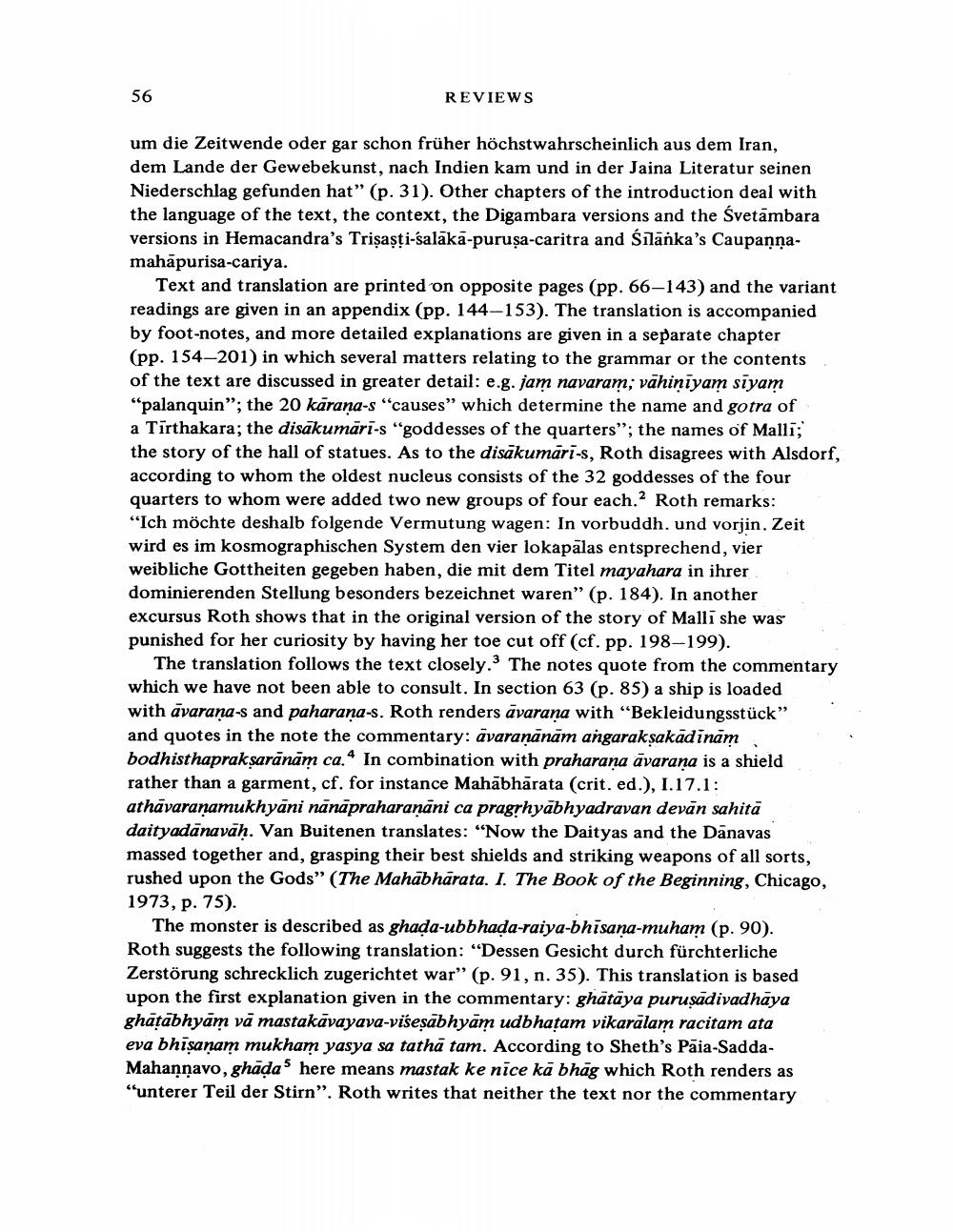Book Title: Reviews Of Diffeent Books Author(s): J W De Jong Publisher: J W De Jong View full book textPage 8
________________ 56 REVIEWS um die Zeitwende oder gar schon früher höchstwahrscheinlich aus dem Iran, dem Lande der Gewebekunst, nach Indien kam und in der Jaina Literatur seinen Niederschlag gefunden hat" (p. 31). Other chapters of the introduction deal with the language of the text, the context, the Digambara versions and the Svetambara versions in Hemacandra's Trisasti-salaka-purusa-caritra and Silanka's Caupannamahāpurisa-cariya. Text and translation are printed on opposite pages (pp. 66-143) and the variant readings are given in an appendix (pp. 144-153). The translation is accompanied by foot-notes, and more detailed explanations are given in a separate chapter (pp. 154-201) in which several matters relating to the grammar or the contents of the text are discussed in greater detail: e.g.jam navaram; vähiniyam siyam "palanquin”; the 20 karana-s "causes” which determine the name and gotra of a Tīrthakara; the disākumārī-s "goddesses of the quarters"; the names of Malli; the story of the hall of statues. As to the disākumari-s, Roth disagrees with Alsdorf, according to whom the oldest nucleus consists of the 32 goddesses of the four quarters to whom were added two new groups of four each.2 Roth remarks: "Ich möchte deshalb folgende Vermutung wagen: In vorbuddh. und vorjin. Zeit wird es im kosmographischen System den vier lokapälas entsprechend, vier weibliche Gottheiten gegeben haben, die mit dem Titel mayahara in ihrer dominierenden Stellung besonders bezeichnet waren" (p. 184). In another excursus Roth shows that in the original version of the story of Malli she was punished for her curiosity by having her toe cut off (cf. pp. 198-199). The translation follows the text closely. The notes quote from the commentary which we have not been able to consult. In section 63 (p. 85) a ship is loaded with avarana-s and paharana-s. Roth renders āvarana with “Bekleidungsstück” . and quotes in the note the commentary: avarananam angaraksakādinām bodhisthapraksarānam ca. In combination with praharana āvarana is a shield rather than a garment, cf, for instance Mahābhārata (crit. ed.), 1.17.1: athāvaranamukhyāni nānāpraharaṇāni ca pragphyābhyadravan devān sahitā daityadā navāḥ. Van Buitenen translates: "Now the Daityas and the Dänavas massed together and, grasping their best shields and striking weapons of all sorts, rushed upon the Gods” (The Mahābhārata. I. The Book of the Beginning, Chicago, 1973, p. 75). The monster is described as ghada-ubbhada-raiya-bhisana-muham (p. 90). Roth suggests the following translation: “Dessen Gesicht durch fürchterliche Zerstörung schrecklich zugerichtet war" (p. 91, n. 35). This translation is based upon the first explanation given in the commentary: ghātāya purusādivadhāya ghātābhyām vā mastakāvayava-višesabhyām udbhatam vikarālam racitam ata eva bhisanam mukham yasya sa tathā tam. According to Sheth's Pāia-SaddaMahannavo, ghādas here means mastak ke nice kā bhāg which Roth renders as "unterer Teil der Stirn". Roth writes that neither the text nor the commentaryPage Navigation
1 ... 6 7 8 9 10 11 12 13 14 15 16 17 18 19 20 21 22 23 24 25 26 27
